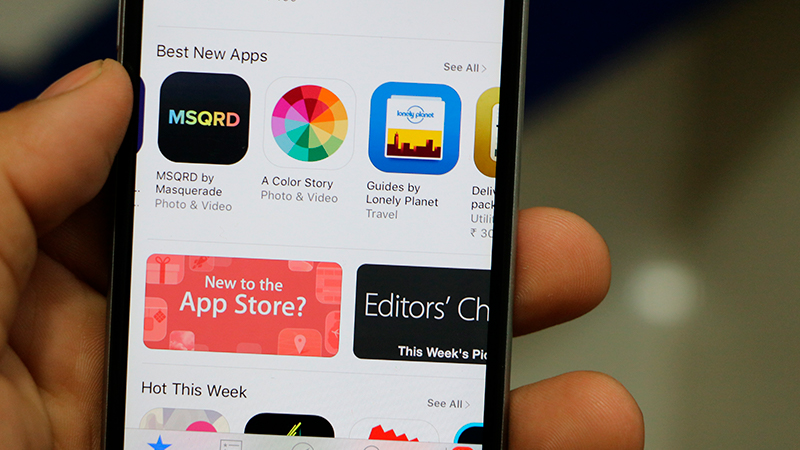In today’s fast-paced world, mobile apps for learning languages have become essential tools for anyone looking to expand their linguistic skills. These apps offer convenience, flexibility, and personalized learning experiences, making it easier than ever to pick up a new language.
Moreover, the rise of mobile apps for learning languages has democratized access to language education. In the past, formal classes or expensive software were the only options. Now, with just a smartphone, anyone can immerse themselves in a new language through interactive lessons and engaging activities.
Additionally, mobile apps for learning languages offer a unique approach by incorporating gamification, voice recognition, and cultural insights. They make language learning fun and dynamic, keeping users motivated and consistent in their practice. With a variety of options available, learners can choose the app that best suits their needs and goals.
Top Mobile Apps for Learning Languages

1. Duolingo
Duolingo is one of the most popular language learning apps available today. It gamifies the learning process, offering bite-sized lessons that feel more like a game than a chore. With over 30 languages to choose from, Duolingo is ideal for beginners looking to build a strong foundation.
2. Babbel
Babbel focuses on real-world conversations, offering structured lessons designed by language experts. Unlike some other apps, Babbel emphasizes grammar and vocabulary that are essential for practical communication.
3. Memrise
Memrise uses spaced repetition and mnemonic techniques to help users memorize vocabulary quickly and effectively. It is particularly useful for visual learners, offering videos of native speakers to enhance pronunciation and cultural understanding.
4. Busuu
Busuu offers both self-paced lessons and a community-driven learning experience. Users can connect with native speakers to get real-time feedback on their language skills, which makes it a great option for improving fluency.
5. Mondly
Mondly offers lessons in over 30 languages with an emphasis on conversational learning. It uses advanced technologies such as augmented reality (AR) and chatbots to create immersive language experiences, which makes learning more engaging.
6. Pimsleur (Mobile apps for learning languages)
Pimsleur focuses on auditory learning, making it an excellent option for learners who prefer listening and speaking over reading. The app’s method emphasizes learning through context and conversation, helping users retain information longer.
7. Rosetta Stone
As one of the oldest names in language learning, Rosetta Stone offers an immersive learning method. It teaches languages through images, text, and sound, helping learners to naturally associate words with their meanings without translation.
8. LingoDeer
LingoDeer specializes in Asian languages such as Korean, Japanese, and Chinese, although it offers other languages as well. It provides a structured and in-depth approach to learning, making it a favorite among serious language learners.
9. HelloTalk (Mobile apps for learning languages)
HelloTalk is a unique app that connects users with native speakers from around the world. Instead of structured lessons, it allows learners to engage in real conversations via text, voice, and video calls, making it ideal for improving fluency and cultural understanding.
10. Drops
Drops makes learning new vocabulary fun and fast with its minimalist design and focus on microlearning. Users can spend just five minutes a day learning new words, making it perfect for busy learners who want to build their vocabulary quickly.
Boosting Efficiency with Language Learning Apps
In addition to enhancing your linguistic abilities, integrating language learning apps with daily productivity apps for professionals can further optimize your time management and study habits.
By setting clear goals and tracking your progress, productivity apps like Todoist or Trello can help you stay on top of your language learning journey, making the process more organized and efficient.
Tailoring Your Learning Experience with Mobile Apps
One of the key advantages of mobile apps for learning languages is the ability to customize your learning experience. Many of these apps offer personalized lesson plans, allowing users to focus on areas where they need the most improvement.
For instance, if you’re struggling with pronunciation, apps like Pimsleur or Mondly provide speech recognition tools to fine-tune your skills.
Meanwhile, apps such as Duolingo and Babbel offer tailored exercises based on your progress, ensuring you’re always working at the right level of challenge.
Creating a Daily Routine (Mobile apps for learning languages)
Consistency is key when learning a new language. Mobile apps make it easier to establish a daily learning routine, whether you have five minutes or an hour to spare.
By setting up daily reminders or using apps with streak features like Duolingo, you can stay motivated to practice regularly.
Combining these apps with daily productivity apps can help you allocate specific times for learning and track your progress over time.
How Language Learning Apps Improve Mastery of Editing Software
In today’s digital age, mastering multiple skills is essential for staying competitive. One area where this rings true is editing software, whether for video, photography, or audio.
However, navigating these tools often requires familiarity with industry-specific terminology and settings, which can be available in multiple languages.
Developing multilingual skills can help users understand and utilize global editing platforms more effectively.
By using mobile apps for learning languages, individuals can expand their linguistic abilities, making it easier to comprehend editing interfaces, tutorials, and forums in different languages, ultimately enhancing their proficiency in editing tools.
Engaging with Native Speakers Through Apps
Language learning goes beyond mastering vocabulary and grammar; it’s also about understanding how native speakers use the language in everyday situations.
Apps like HelloTalk and Busuu offer opportunities to engage in conversations with native speakers, giving learners a chance to practice real-life dialogue.
By speaking directly with people from different cultures, you not only improve fluency but also gain valuable cultural insights that enrich your learning experience.
Overcoming Language Barriers
Speaking with native speakers can be intimidating, especially for beginners. However, mobile apps provide a safe space to make mistakes and receive feedback.
HelloTalk, for instance, allows users to correct each other’s messages, making it a collaborative and supportive environment for language learners.
This feature can be incredibly beneficial in overcoming the fear of making mistakes when learning a new language.
Gamifying the Learning Process (Mobile apps for learning languages)
Another feature that sets many mobile apps for learning languages apart is their use of gamification. By turning lessons into games, apps like Memrise and Drops keep users engaged and motivated.
Gamified elements, such as earning points, unlocking new levels, and competing with friends, make learning fun and less monotonous.
This interactive approach appeals to both children and adults, encouraging a more consistent practice routine.
Encouraging Long-Term Learning Habits
The gamified structure of mobile language apps not only makes learning fun but also helps reinforce long-term study habits.
With features like streaks, rewards, and leaderboards, these apps encourage users to return daily and maintain steady progress. Over time, this can lead to better retention and mastery of the language.
Conclusion: Mobile apps for learning languages
In conclusion, mobile apps for learning languages offer a highly accessible and flexible way to begin or continue your language journey. With a wide range of apps available, learners can choose the one that best fits their individual goals, learning styles, and time availability.
However, while these apps are effective for building foundational skills, they are most powerful when combined with other learning methods. Engaging with native speakers or using productivity tools to set clear goals can significantly enhance your progress.
Ultimately, mobile language apps are a fantastic tool for anyone looking to expand their linguistic abilities, whether for personal growth, travel, or professional reasons. By exploring different apps and creating a structured learning plan, you can make meaningful progress towards fluency.


